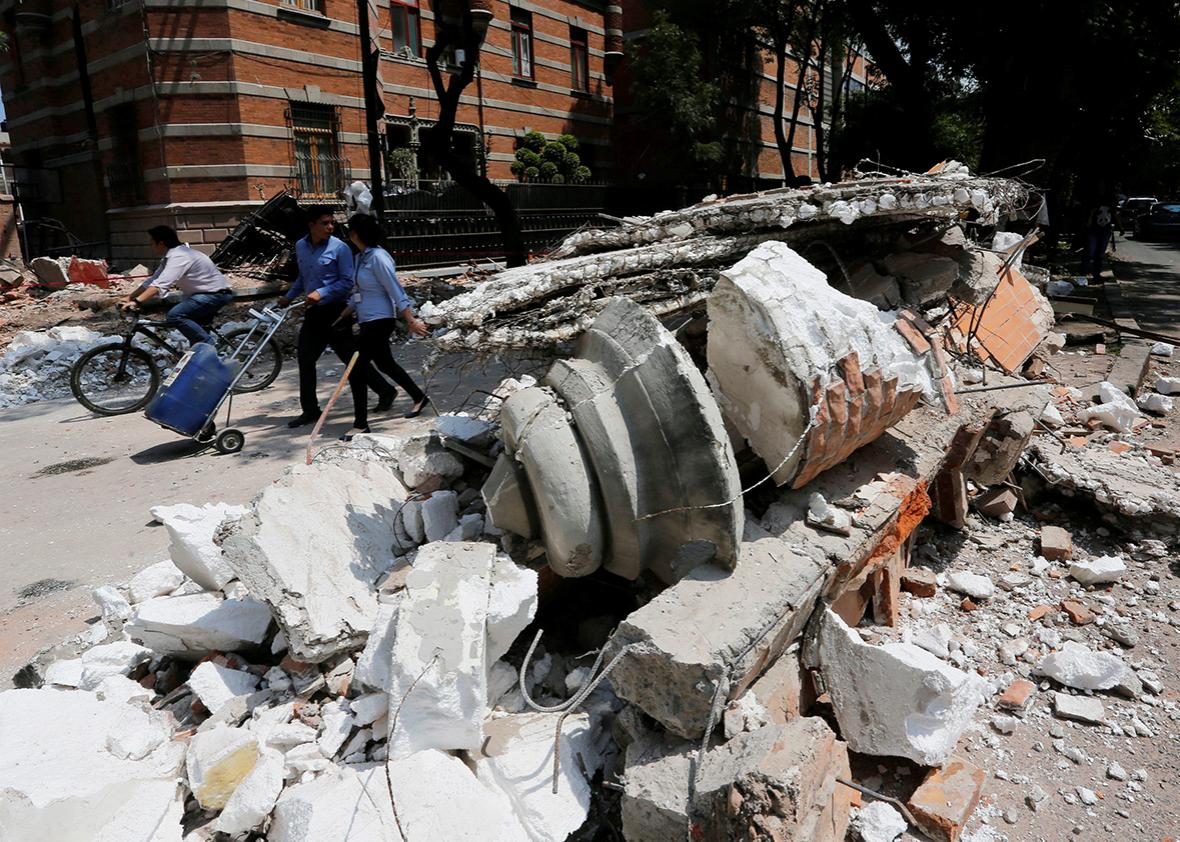The past month has been a mind-bending litany of natural disasters. First, Hurricane Harvey swamped Houston. Then Mexico experienced a massive earthquake, an 8.2 magnitude shock to the southern state of Chiapas (the quake primarily happened in the Pacific, which limited damage). Simultaneously, Hurricane Irma was pummeling the Caribbean and then Florida and the southeastern U.S. Hurricane Katia hit eastern Mexico. And currently, Hurricane Jose is just off the East Coast, while Hurricane Maria is wreaking havoc in the Caribbean. And a second earthquake just hit Mexico—this one is of lesser 7.1 magnitude, but with a much more direct hit on Mexico City.
What is happening? Is the world coming to an end?
It certainly feels like it. But it isn’t. Your brain is seeing doomsday signals everywhere, because these are scary things, but they’re not that abnormal.
Hurricanes, for one, are in season right now. Atlantic hurricane season typically runs from June 1 to Nov. 30 every year (though it’s heavily influenced by larger climatic conditions such as the El Niño/La Niña cycle). This summer, as the temperature rose, thunderstorms formed, and a wind shear kicked in, more than a dozen named storms took shape and danced their way across the ocean. Yes, this has so far been an exceptional hurricane year, but given the well-understood and reasonably reliable factors at stake, forecasters largely predicted that it would be. In August, the National Hurricane Center predicted 14 to 19 named storms, including two to five major hurricanes.
Of course, the damage has been devastating. The record-breaking sequence of events has felt catastrophic and alarming because of the massive toll it has taken. This has even prompted conversations about what climate change has to do with all of this, which is perhaps a silver lining, because we should be seeing these storms as an indicator of what’s to come. But ultimately, it’s just that time of year.
Earthquakes, on the other hand, have no “season.” That makes it perhaps harder to process that two high-magnitude quakes could hit Mexico in the same month simply by chance—maybe even harder to process than Hurricanes Harvey and Irma’s double trouble. And that’s even before you consider the spooky statistical improbability that Mexico City’s last great earthquake, which killed at least 10,000 people, also happened on Sept. 19—Sept. 19, 1985.
But, as Slate has explained before following the eerie alignment of earthquakes in Ecuador and Japan last summer, back-to-back earthquakes are actually pretty common. On average, there are a staggering 1.4 million small earthquakes every year. In that same period, we typically see about 15 quakes that hit magnitude 7 and one that approaches magnitude 8 annually or every two years. And, because Mexico sits atop seismically active earth, its chances of experiencing events like these is higher. “It’s unusual, but it’s doesn’t shock me,” Jeroen Ritsema, a geologist at the University of Michigan, says of the two quakes. “It’s a region that is seismically very active.”
The crazed dimensions this Groundhog Day of horrors has taken on exists mostly in our minds, where we tend to look for logical patterns and cohesive stories. But instead of suggesting that nature has rebelled against us, this summer’s back-to-back-to-back-to-back events should serve as a potent reminder of the earth’s fundamental unpredictability—and power. With any luck, they’ll also serve as a lesson that natural disasters are both impervious to our desires and often devastating. And we should do everything in our power to limit their chances of happening—which, yes, means slowing climate change as much as we possibly can.
But the world isn’t ending yet. It just feels like it is.
